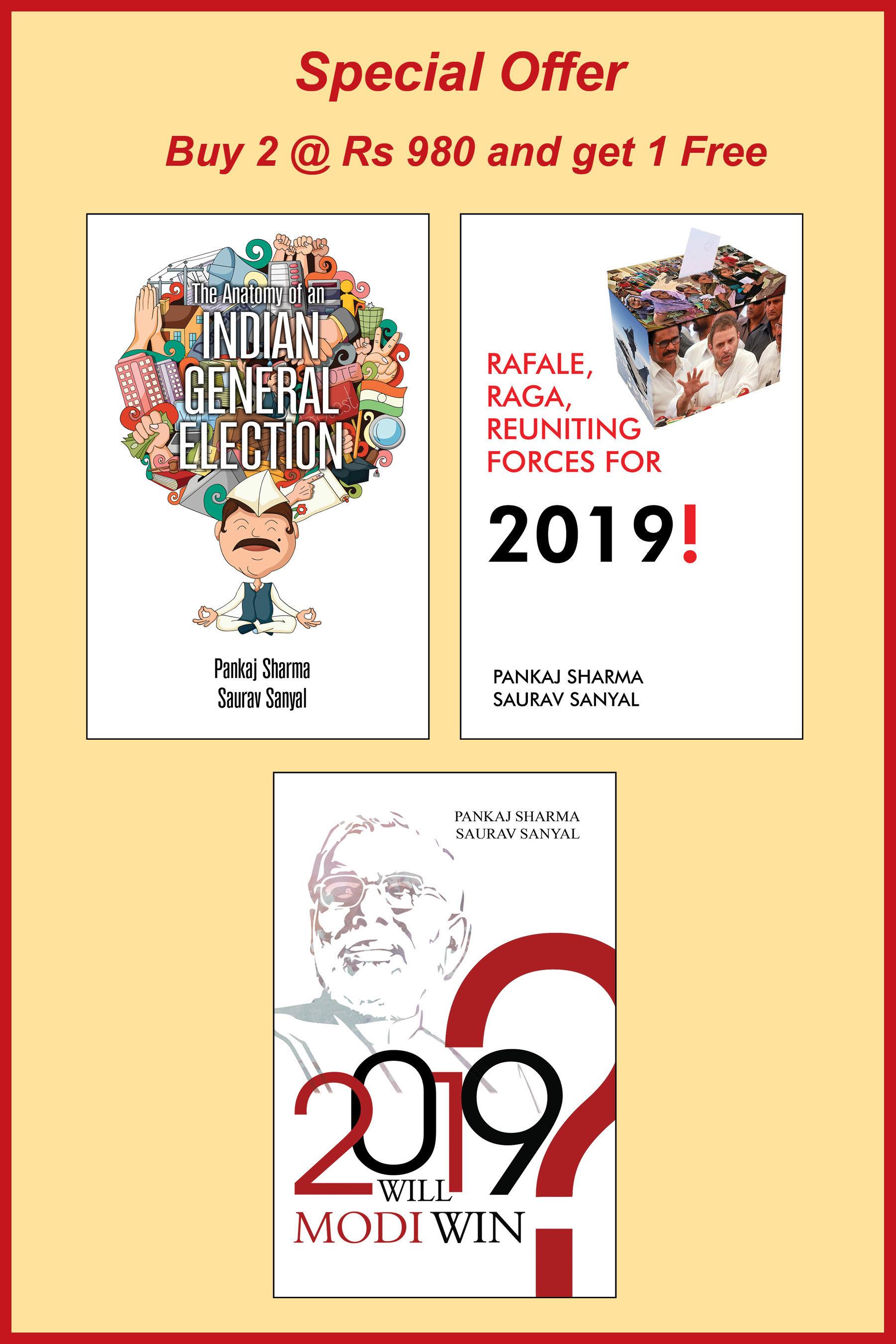Subjects
Recent View(s)
Special Offer
Buy 2 @ Rs 980 and Get 1 Free
Pankaj Sharma and Saurav Sanyal
The Anatomy of an Indian General Election
Anatomy of Indian General Elections is the concluding part of Trilogy on 2019 Elections. The first two chartbusters “2019: Will Modi Win?” and “Rafale, Raga, Reuniting Forces for 2019’’ drew attention to the risks involved for the incumbent government and the chances for Congress in 2019 by predicting the wins in Assembly Elections in Rajasthan, MP and Chattisgarh. This book is the third and last in trilogy on upcoming 17th Lok Sabha Elections. There are several key events and political developments over previous twelve months which indicate that the race for 2019 will not be a one sided contest. This is also likely to be one of the most bitterly fought elections in the electoral history of India as there is a high degree of uncertainty on the post-poll political picture which may emerge. But, which are the factors that will influence the electoral verdict in 2019? In this book, we look at the key issues which would determine if Modi would get his second term as the PM of India.
Prime Minister, Shri Narendra Modi is one of the most successful and popular politicians India has seen in the recent decades. In Gujarat as Chief Minister, he had won three successive elections in 2002, 2007 and 2012. The President of BJP Amit Shah is one of the most organized and hard working political leaders across political spectrum in over a decade. Together they are known for their meticulous planning and sharp instincts on sensing the public mood, which are the issues they will focus on? BJP is already more aggressive on the popular religious issues. The debate on citizenship bill in North-East, the issue of illegal migrants and entry of Rohingya Muslims from Myanmar and Triple Talaq for Muslim women are prominent examples.
Rafale, Raga, Reuniting Forces for 2019!
2019 Lok Sabha Elections will not only be a poll which will determine the direction for Indian economy and Polity, it is also likely to be one of most bitterly fought elections in the electoral history of the country. It is uncertain that how the post poll picture may emerge in April-May next year, but the performance of BJP will also be dependent on how effectively the Congress can challenge the popularity of Prime Minister Narendra Modi and poll management of BJP President, Amit Shah. After 2019: Will Modi Win? in which the authors looked at the next elections from the perspective of BJP, this book presents an unbiased and objective picture from the perspective of main challenger, India National Congress and will there be (and that is a big ‘If’) a United Opposition?
This is a topic which has a significant bearing on next year’s election outcome because Congress is still the default opposition in close to 300 seats and the party to vote for, when people want change and switch to another national party. What could help Congress is that the BJP Govt has not done significantly better than ten year average of UPA nor did it deliver on the high expectations, the critics say. Will Congress have the chance as state govt specific and candidate level inefficiency is the Achilles’ heel for BJP? Another reason why 2019 is a “do or die” for Congress is because it runs a risk of getting irrelevant by the time it is 2024.
In a situation where there is a lack of enough focus on how the opposition is responding to BJP, this books aims to fill the gap. For the readers and political analysts who are looking for an objective assessment, this book will be useful. It is an in-depth independent analysis from the perspective of Congress at a national level in 2019 and the scenarios in view of the current challenges for the party and a United Opposition. The analysis also takes a detailed look at the ephemeral concept of “Opposition Unity” and assembly elections in Karnataka, Madhya Pradesh and Rajasthan.
2019: Will Modi Win?
Political stability is an essential requirement for providing the right environment needed for peaceful communities and the vision of political leadership plays a key role in growth of a country. The NDA Govt has already completed its first three years and BJP is certainly on a rise. With a massive mandate in Uttar Pradesh and an expanding footprint across the country, it seems impossible to stop the Modi juggernaut in 2019. But, is the reality that simple and straight forward?
In 2014, BJP was able to win a simple majority of 282 seats with the least number of percentage vote-share in the history of independent India because opposition vote got fragmented. Opposition is unlikely to repeat this mistake in 2019. Also, there was a massive anti-incumbency wave against UPA in 2014 and this tail wind will not be available for BJP in 2019. There are many states which only have a nominal presence of BJP and the party is not fighting more than 350-360 seats practically speaking.
In this book, we look at the factors which would determine if Modi would get another term. Will Modi return or will it be a coalition Govt in Delhi in 2019. Or BJP’s dependence on allies would be so high in the next term that the “compulsions of coalition politics” will come to the fore. Read on to get an impartial and non-ideological take on what the future holds for the country from the perspective of 2019 general elections.


 Political Science
Political Science
